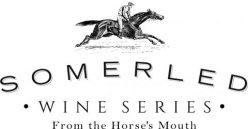While the hustle and bustle of vintage is finally settling down, there is still plenty of important working going on in the winery. Rob is busy preparing his ‘babies’ for the next stage of their development (and no, he doesn’t have a favourite!).
Let’s take a look a closer look…
Sauvignon Blanc (in tank)
This wine has now been confirmed in the lab as “sugar dry”. That means that fermentation is complete. Therefore, it is now ready to “rack” (which will happen over the coming week) and a small amount of protective sulphur dioxide will be added.
Whoa… wait up! That’s a lot of technical terms to throw at you in one paragraph. Let’s just take a minute to look at these in more detail.
Sugar Dry: This just means that all of the fermentable sugars (being glucose and fructose) are below 1 g/L (or 0.1%). There comes a point in the fermentation that measuring the Baumé is no longer sensitive enough to determine the point when the fermentation has stopped, and the wine is considered dry. That is when the laboratory needs to use much more specific tests such as enzymatic assays or High Performance Liquid Chromatography (HPLC for short, because let’s face it, that’s a mouthful!).
Racking: racking a white wine simply means to move it from the tank it was fermented in (with all the lees and sediment at the bottom of it) to a fresh, clean vessel. Particularly with a wine like Sauvignon Blanc, you don’t want to leave it on this sediment for too long after the completion of fermentation as this starts to affect the taste of the finished wine.
Sulphur Dioxide (or SO2): Let’s come back to this.
Chardonnay (in barrel)
This wine is also dry, so Rob is happy to add the malolactic bacteria now. He’ll then give it a good stir and top up the barrels to ensure there is very little space at the very top. The more space, the more oxygen in the barrel which has the potential to cause oxidation.
If you missed the question on last week’s blog post about why Rob prefers to wait until the end of fermentation to add the MLF bacteria, then here is the answer…
“There’s a feeling that adding MLF bugs while the yeast fermentation is still finishing (and residual sugar still in the wine), may lead to acetic acid (VA) production. Since there’s no great rush to get MLF started, we’d prefer not to take that chance!”
Fumé Blanc (in barrel)
This is also dry and will now be treated in the same way as the Chardonnay
Pinot Rosé (in tank)
Again, this one has also finished fermentation and is considered dry. It’s also ready for some MLF bacteria to be added. Seeing this wine doesn’t spend any time in barrel, and the malolactic fermentation process will happen in a tank, Rob will need to transfer this to a tank that is just big enough for the volume of wine and then top it up to make sure the amount of space in the tank is at a minimum… just like the barrels for the Chardonnay and Fume.
Pinot Dry Red (in barrel)
The Pinot has been dry for a while now. At least one of the barrels has already finished malolactic fermentation. Rob will give it a couple more days before he gets the lab to take a representative sample of all of the individual barrels to check if all of the barrels have finished. If they have finished, then he’ll rack them and add a small amount of sulphur dioxide and top them up.
Racking a wine in barrel is essentially the same process as for wines in tank. The wine is siphoned off into a tank, the barrels are then cleaned out with a high pressure hose to remove all the sediment and residue and the wine is then returned to the barrels.
At this stage, the wines are really quite fragile. That’s why it is super important to keep oxygen away from the wines by ensuring the containers are absolutely full. This means periodically checking all the barrels and topping them up as necessary.
So, what’s the story with sulphur dioxide?
Without opening an enormous can of worms, let’s briefly have a chat about the role of SO2 in wine production.
Sulphur dioxide has been used in winemaking for many years. There is talk of the Egyptians and Romans using it, but there hasn’t been any conclusive proof of that.
Sulphur dioxide is a unique compound which inhibits microbial activity and aids in preventing oxidation and therefore is commonly used for maintaining the wine in prime condition.
It can be added to the bins in which the grapes are harvested and transported to the winery, to the juice prior to fermentation and, most commonly, to the wine after fermentation and during storage.
Sulphur dioxide is added in very small amounts and is considered harmless to most consumers. A small proportion of people can be sensitive to sulphur dioxide. In these cases though, it is important to remember that sulphur dioxide is actually naturally produced by yeast during the fermentation process. Therefore, some sulphur dioxide will be present in all wines even if it has not been added.
Do you have any questions or comments about adding sulphur to wine? We’d love to hear your thoughts.
